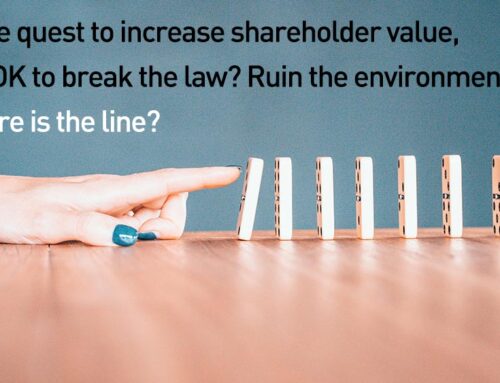Theft by employees is roughly a $16 billion problem in US companies. Employees steal through fraud, cheating the accounting department, or stuffing cash or product into their pockets. In response, businesses buy security cameras and motion detectors and hire security guards. They develop tracking procedures and reporting systems, and have their attorneys compose theft policies. They create scam-resistant accounting processes, install surveillance software, key card entry systems, and point-of-sale systems.
Because we can measure losses from employee theft, and because theft is such abhorrent behavior, we go all out to put a stop to it.
And hey, $16 billion is a lot of dough.
But so is $350 billion.
And so is $1 trillion.
Lost productivity due to disengaged employees is estimated to cost US businesses $350 billion per year. Employee turnover costs US companies $1 trillion per year.
And the top reason employees are disengaged, the number one reason employees quit companies? They have bad managers.
Even if there’s some overlap in the numbers, this means bad managers cost companies 65 to 80 times more than employee theft.
Bad managers fail to earn the trust and respect of their teams. They don’t support employees in their work and their careers. Bad managers are poor communicators, so they don’t provide feedback and encouragement. They put their own needs and ambitions ahead of the team.
Employees might lose interest in their jobs and simply punch the clock for any of these reasons. And any of these could prompt employees who can easily get other jobs to do just that. But bad managers don’t just exhibit one of these characteristics, they exhibit them all.
So, employee engagement hovers around 35% and annual voluntary turnover—people quitting—runs about 15%.
Solving these problems could save companies hundreds of billions of dollars a year. And yet, bad managers don’t set off the alarm bells like a missing laptop does.
What’s Your Plan?
What is your company doing to identify bad managers? And if you found them, what would you do with them?
Where’s the equivalent of a security guard to protect employees from bad managers? The surveillance system that spots abusive or negligent bosses? The policy that sets performance standards for managers?
What’s the procedure for hiring first-time managers? Is it the industrial-revolution-era practice of rewarding individual contributors, or do you only seek and hire high-potential managers? Do you know what questions to ask prospective managers during interviews to see if they have that potential?
How’s your manager training program? And by that, I mean training in the management of people, not training to reduce risk and lower insurance costs.
Many business leaders talk about the importance of employee engagement and retention. And some of them demand that managers do a better job of engaging employees, but they don’t seem to realize that the managers themselves are the problem. Most of them simply don’t have the ability.
There are at least three reasons managerial merit doesn’t get the same attention as other, less costly workplace problems.
The first is that good managers have certain character traits that enable them to do their jobs well. But talking about character rather than skill makes us uncomfortable. It feels personal, like it has no business in the analytical, objective process we use to measure employee performance. And it’s hard to determine character in a job interview: it is revealed over time. This makes references extremely important, but unguarded, honest references can be hard to find.
The second reason is that innate management talent is rare. Gallup estimates than only 10% of people have the character traits essential for managerial success. It doesn’t take a math whiz CEO to look around the conference room table (and in the mirror) and realize not everyone they see is in that 10%. Perhaps looking too closely at management ability would be looking a little too close to home.
The third reason? Leadership incentive structure. When compensation is based on things like cash flow or stock price, the levers we pull to meet those kinds of goals are the same old same old: sell more, charge more, grow share, reduce costs, layoff people, outsource. For some reason, employee engagement and retention just don’t make it into the conversation.
If there is to be a solution to this $1 trillion problem, it must come from the top: the boards responsible for setting the company’s agenda and its incentive plans.
It may also come from below: talented managers who leverage their success to inspire and mentor others.
Regardless of the source, until companies prioritize improving employee engagement and retention, they are paying an awfully high price for their pound-foolish inaction.
To learn more about how to be a successful manager, read Don’t Be a Dick Manager: The Down & Dirty Guide to Management. It’s the management training you never got, available on Kindle and in paperback from Amazon.com. The audiobook is available from Amazon, Audible and iTunes.
Do you think you might be a dick manager? Take the quiz!
Photo by Gabriel Meinert on Unsplash







